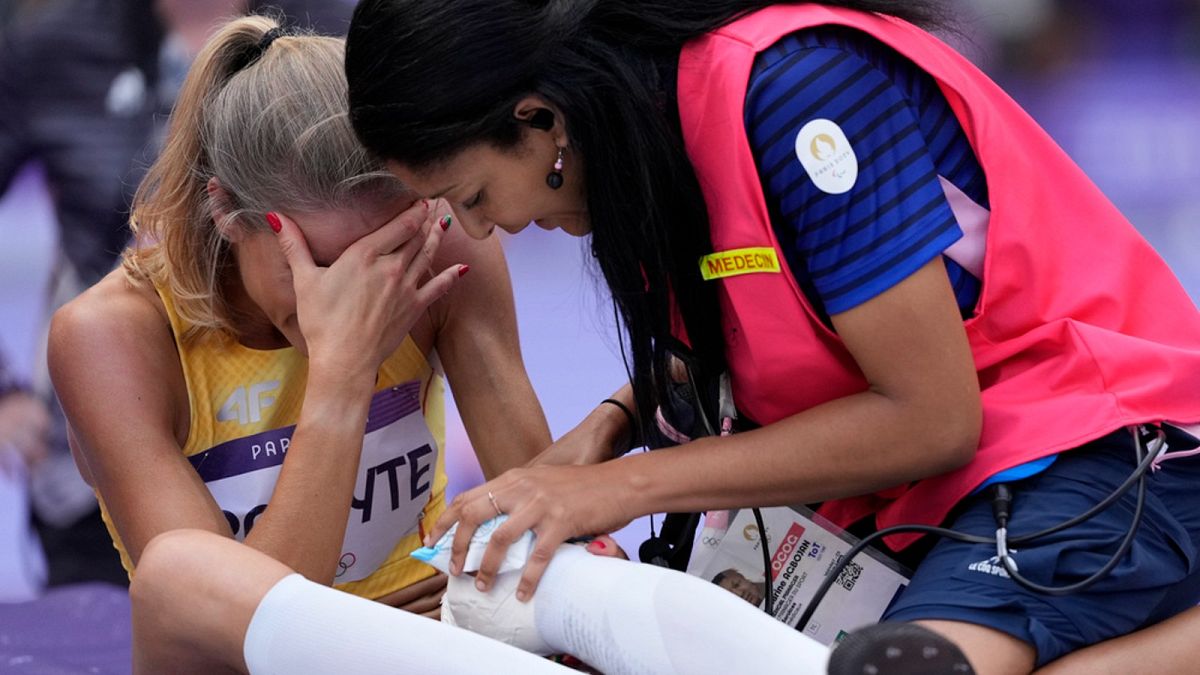Sports
Ranked: Most dangerous and safest Olympic sports based on injury rate

Researchers determined the sports with the highest risk factors based on data collected since the 2008 Beijing Olympics. Spoiler: It’s not wrestling or artistic gymnastics.
If the abundance of Olympic sports persuades you to take up a new discipline in autumn — maybe something you’d never thought of before — you may want to consider its safety first.
New research compared the number of athletes in each discipline to the number of reported injuries, determining the sports with the highest risk factors.
The findings are somewhat surprising: BMX emerged as the most dangerous Olympic sport, with a 34.38% injury rate, while table tennis and handball were more injury-prone than equestrian and trampoline.
BMX — an abbreviation for bicycle motocross — is a cycle sport performed on small bicycles in competitive racing or freestyle, either on the street or off-road tracks.
The peak injury rate was registered at the Rio 2016 Olympics, with 37.5% of athletes sustaining traumas.
Taekwondo — a Korean martial art and combat sport involving punching and kicking — follows closely, with nearly 30% of athletes suffering injuries.
Football is the most dangerous team sport, with over 27% of its 1,508 competitors experiencing injuries. Handball is the second most dangerous team endeavour, trailing by nearly 10%, with an average of 17.98% injured athletes.
Boxing had the second-highest number of injured athletes at the Tokyo Olympics, indicating a growing risk. You can take a look at the full list below.
Which Olympic sports have the highest injury rate?
- BMX cycling, 34.38%
- Taekwondo, 29.92%
- Football, 27.19%
- Mountain bike cycling 22.44%
- Boxing, 18.12%
- Handball, 17.98%
- Hockey, 16.55%
- Weightlifting, 15.86%
- Water polo, 14.03%
- Athletics, 13.04%
- Judo, 12.44%
- Triathlon, 11.59%
- Wrestling, 11.33%
- Basketball, 10.69%
- Artistic gymnastics, 10.54%
- Badminton, 9.65%
- Tennis, 9.44%
- Beach volleyball, 9.38%
- Volleyball, 7.42%
The International Olympic Committee (IOC) implemented a multi-sport injury surveillance system for the first time at the 2008 Beijing Olympic Games.
This data was collected from the British Journal of Sports Medicine (BJSM) and processed by Casinority researchers. It takes into account all Summer Games between Beijing 2008 and Tokyo 2020.
The London 2012 Olympics had the highest overall injury rate, with 12.8% of athletes reporting injuries.
Which Olympic sports are the safest?
It might come as a surprise, but most sports on the opposite side of the table are associated with what we generally deem to be risk factors or tools: guns, water, horses, and arrows.
Canoeing/kayaking boasts the safest record of all Olympic sports, with an average injury rate of just 2.23, which narrows down to 1.2% in canoe slalom. The full list is below.
- Canoeing/kayaking (all types) 2.23%
- Shooting, 2.24%
- Rowing, 2.25%
- Archery, 3.65%
- Swimming, 3.78%
- Cycling – Track, 4.24%
- Gymnastics – Trampoline. 4.69%
- Equestrian, 4.73%
- Table tennis, 4.83%
- Modern pentathlon, 6.05%
All types of kayaking and canoeing are considered safe Olympic sports, with an average injury rate of 2.23%.
Of 987 competitors considered, only 22 injuries were recorded. Shooting is also relatively safe, with a similar injury rate of 2.24% and 26 injuries across three Olympic Games.
Rowing follows closely behind, averaging a 2.25% injury rate out of 1,640 Olympians, with only 3% of athletes injured in 2020.








